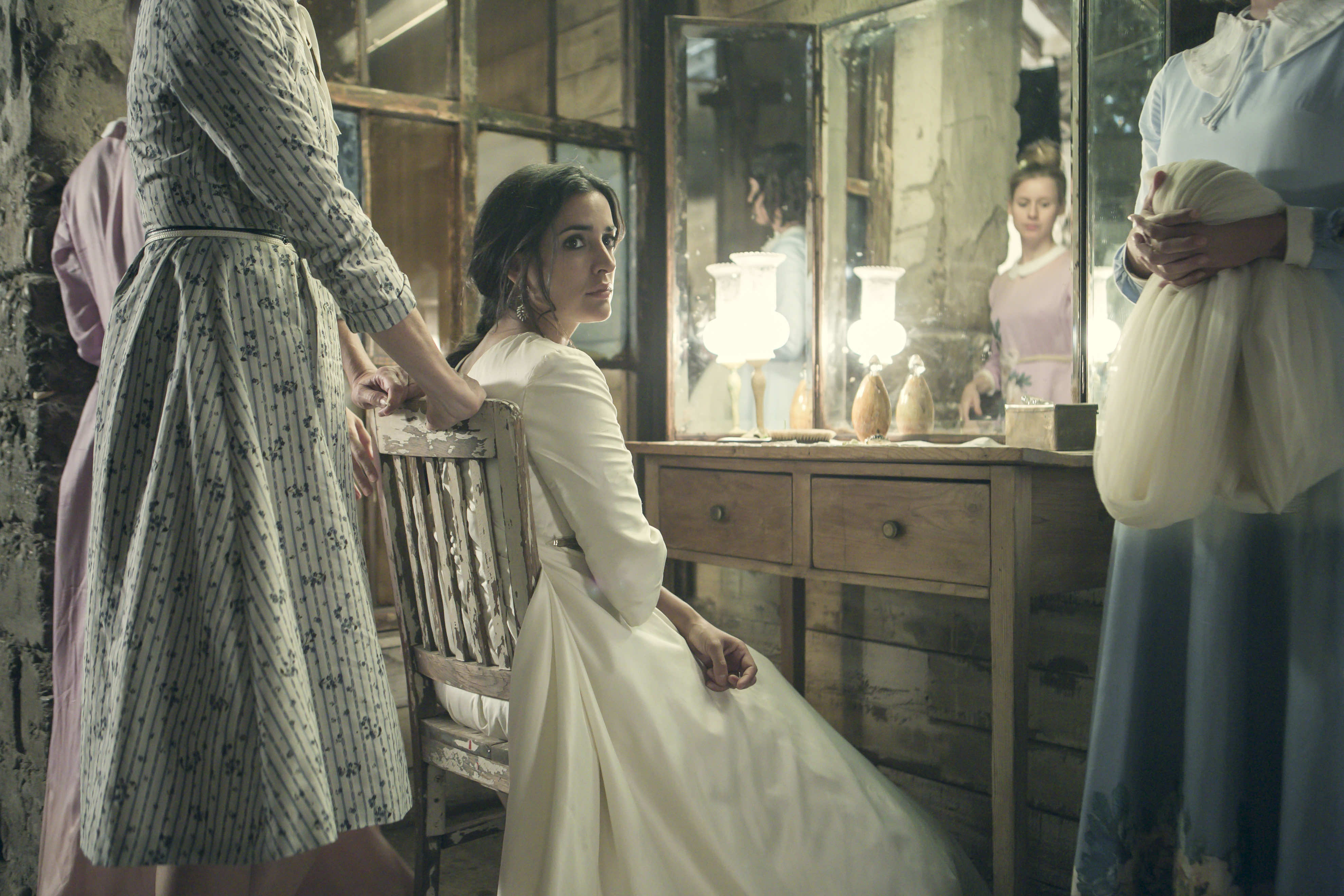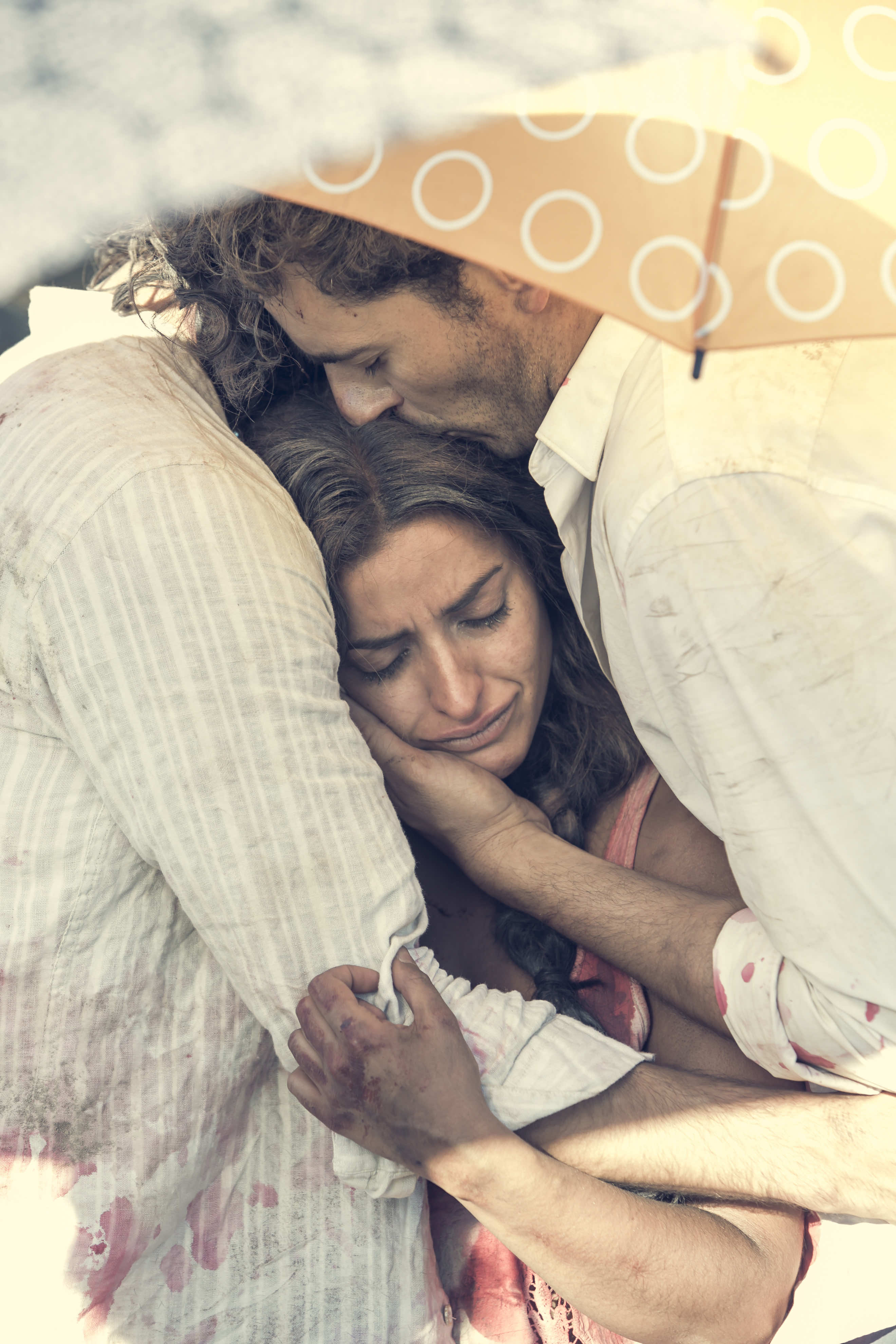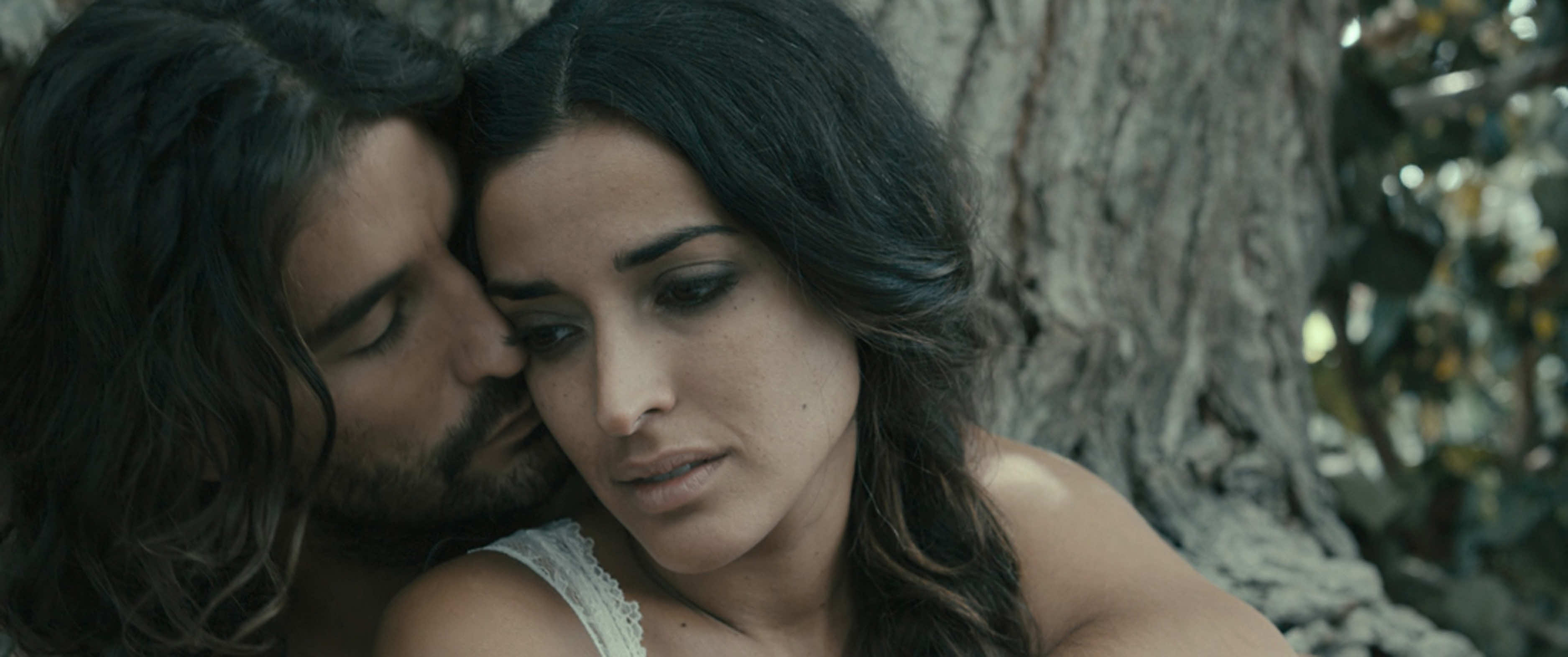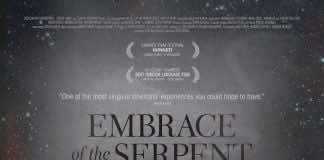
The Bride (La Novia) is based on the famous play “Bodas de sangre” by Federico García Lorca, retold through the eyes of Spanish writer-director Paula Ortiz, who is able to bring out the female perspective in this tragic love triangle, albeit with mixed results cinematically. In The Bride, a threesome of two boys and a girl meet as youngsters in a remote, desert town. The three strike a friendship that marks their lives, as one of them later is to be married to this young girl while she pines for the other.
The action is set in motion as the bride (Inma Cuesta) agrees to marry the groom (Asier Etxeandia), the nerdier of the two. The groom is perhaps the stereotypical “good guy,” close to his mother and in good standing with the small tight-knit community. His family appears to be wealthier, and his mother, a central character, represents the societal concerns with power, social standing and tradition. As soon as the mother (Luisa Gavasa) accepts the bride as part of the family, she starts doubting her as she learns of her former relationship with Leonardo (Álex García), her former boyfriend.
The majority of the film focuses on what happens on the wedding day, when the bride runs away with Leonardo. Leonardo is now married and has two children with none other than the bride’s cousin (wonderfully portrayed by Leticia Dolera). He is the brooding, tormented type who definitely did not have the same opportunities in life as the groom. An air of tragedy weighs down the drama in spite of what most think is supposed to be one of the happiest days of one’s life, foreshadowing that possibly there is no happy ending in sight. The interactions between the bride and Leonardo reveal a deep passion tainted by remorse and sadness. On the other hand, the interactions between bride and groom are light, airy and somewhat innocent.
with none other than the bride’s cousin (wonderfully portrayed by Leticia Dolera). He is the brooding, tormented type who definitely did not have the same opportunities in life as the groom. An air of tragedy weighs down the drama in spite of what most think is supposed to be one of the happiest days of one’s life, foreshadowing that possibly there is no happy ending in sight. The interactions between the bride and Leonardo reveal a deep passion tainted by remorse and sadness. On the other hand, the interactions between bride and groom are light, airy and somewhat innocent.
The cinematic take on this classic play includes a bare bones setting that has the feel of a theatrical stage, complete with a timeless quality to costumes and set design. The choice works well in the arid desert where the film is set. The outdoor shots are expansive and show the emptiness of this place that so few people inhabit. The indoor shots show how oppressive it feels when the ties that bind — either family or being rooted in a place — become inescapable. Indeed, it is within this setting that one can understand how little choice the bride perceives to have and how high are the stakes for her as the node in a tragic love triangle.
The beauty of the minimalist style in the art direction is that it allows the audience to invest itself in the performances. No doubt that Cuesta carries the film with her heartbreaking portrayal of a torn bride-to-be whose heart and mind quarrel in the most vivid way. It is not only the beauty of the words written by García Lorca that are heartbreaking but also the delivery by Cuesta who can easily go from ecstatic bride — excited for the road ahead — to a heartbroken woman who can only pine for her true love from afar. The complex emotions within the bride are poignant and Cuesta delivers them in a way that we understand rather than reproach her character.
Although the stylization includes a minimalist structure, the overall composition sometimes lacks the restraint needed to make this an outstanding film. The dramatization of the play is sometimes heavy, laden with the weight necessary or a theater but it can also feel a bit too affected on the big screen. Ortiz also plays with the volume, so at times the laments by different characters are so loud, they can be jarring. The director also uses some allegorical imagery that might be too obvious for most. For instance, there is a looming presence of a recurring character that almost seems straight out of a children’s tale as a “witch.” It is an older woman with an over-the-top performance by María Alfonsa Rosso that appears to know where the relationships in the film are headed and what will take place almost as an inevitable fate. This is one of the least accomplished ideas in the film. Although the end reveals the importance of this character, its presence throughout is not seamlessly related to the rest of the story. Indeed, Ortiz seems to shine with the minimalist, actor-driven sequences and fails to completely master the metaphoric vehicle that cinema can provide. In all, The Bride is an enjoyable, somewhat artistic take on a masterful play. If I had the choice, I would love to see this ensemble on stage.
The Bride runs 96 minutes, is in Spanish with English subtitles and is not rated. It opens this Friday, Aug. 5. It will be playing locally at Miami Dade College’s Tower Theater, at University of Miami’s Bill Cosford Cinema and the Cinema Paradiso-Hollywood and Cinema Paradiso-Fort Lauderdale. All images and a screening link was provided by Outsider Pictures for the purposes of this review.
(Copyright 2016 by Ana Morgenstern. All Rights Reserved. This material may not be published, broadcast, rewritten or redistributed without permission.)










